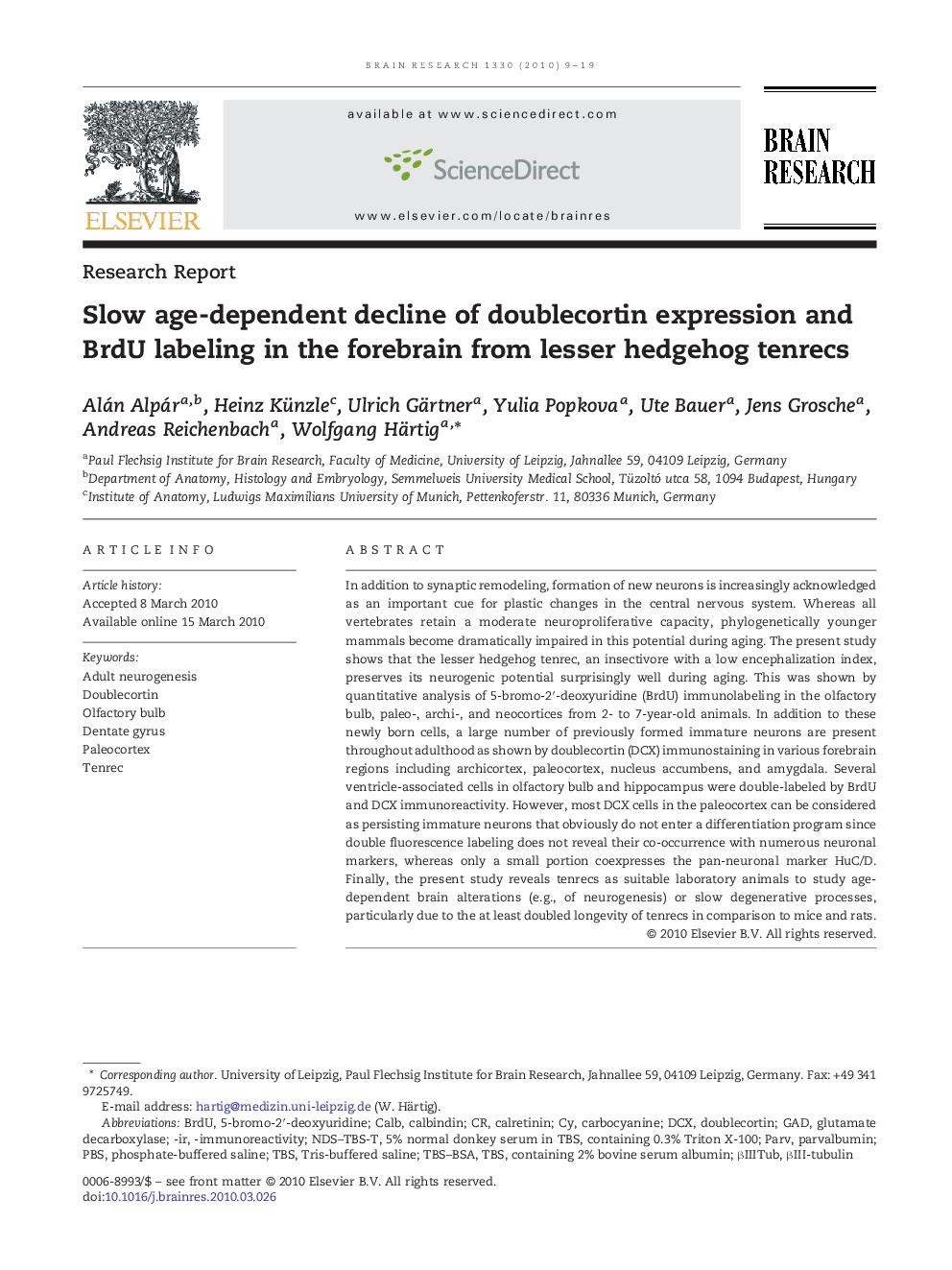| Article ID | Journal | Published Year | Pages | File Type |
|---|---|---|---|---|
| 4326920 | Brain Research | 2010 | 11 Pages |
Abstract
In addition to synaptic remodeling, formation of new neurons is increasingly acknowledged as an important cue for plastic changes in the central nervous system. Whereas all vertebrates retain a moderate neuroproliferative capacity, phylogenetically younger mammals become dramatically impaired in this potential during aging. The present study shows that the lesser hedgehog tenrec, an insectivore with a low encephalization index, preserves its neurogenic potential surprisingly well during aging. This was shown by quantitative analysis of 5-bromo-2â²-deoxyuridine (BrdU) immunolabeling in the olfactory bulb, paleo-, archi-, and neocortices from 2- to 7-year-old animals. In addition to these newly born cells, a large number of previously formed immature neurons are present throughout adulthood as shown by doublecortin (DCX) immunostaining in various forebrain regions including archicortex, paleocortex, nucleus accumbens, and amygdala. Several ventricle-associated cells in olfactory bulb and hippocampus were double-labeled by BrdU and DCX immunoreactivity. However, most DCX cells in the paleocortex can be considered as persisting immature neurons that obviously do not enter a differentiation program since double fluorescence labeling does not reveal their co-occurrence with numerous neuronal markers, whereas only a small portion coexpresses the pan-neuronal marker HuC/D. Finally, the present study reveals tenrecs as suitable laboratory animals to study age-dependent brain alterations (e.g., of neurogenesis) or slow degenerative processes, particularly due to the at least doubled longevity of tenrecs in comparison to mice and rats.
Keywords
Related Topics
Life Sciences
Neuroscience
Neuroscience (General)
Authors
Alán Alpár, Heinz Künzle, Ulrich Gärtner, Yulia Popkova, Ute Bauer, Jens Grosche, Andreas Reichenbach, Wolfgang Härtig,
